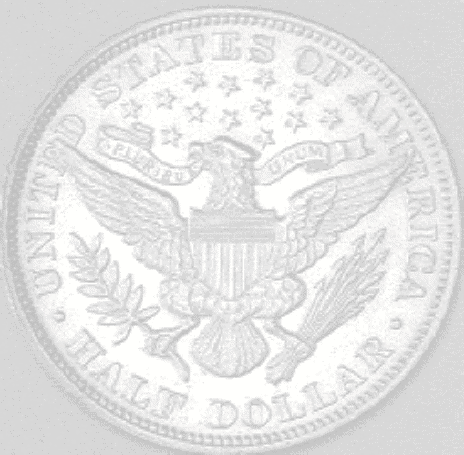
|
|
||
|
|
|
|
|
|
||

-23-
FOR BETTER OR WORSE:
“Divers Weights --And Divers Measures:" The Cent
The Act of April 1792 authorized a cent of 264 grains of copper and a half-cent of 132 grains. By the Act of January 18, 1837, Congress changed their minds and reduced the cent to 168 grains of copper and 84 grains for the half cent. These two coins were discontinued by the Act of February 21, 1857, and a cent weighing 72 grains, containing 88 percent copper and 12 percent nickel was authorized. By the Act of April 22, 1864, a bronze cent containing 95 percent copper and 5 percent tin and zinc was authorized. The weight was fixed at 48 grains. This composition and weight was retained in the Coinage Act of 1873, but the two-cent piece authorized by the Act of 1864 was discontinued (“Coins and Currency”, 12).
“Divers Weights - -and Divers Measures:” The Half-Dime
There was other tampering with the values that had been fixed by Congress. The half-dime authorized by the Coinage Act of 1792 with a fixed weight of 20.8 grains, and a fineness of 892.4 or 18.5625 grains pure silver (Yeoman, 7) had been devalued by the Act of February 21, 1853 to weigh 19.2 grains (Yeoman, 90). By the Act of May 16, 1866, Congress introduced a "nickel" five cent piece containing 75 percent copper and 25 percent nickel. It was therefore nicknamed a "nickel” (Yeoman, 11). The silver half-dime was continued for a time, but it too was discontinued by the Coinage Act of 1873.
"Divers Weights --and Divers Measures:" The Three Cent Piece
In
similar fashion, the silver three cent coin was authorized by the Act of
March 5, 1851. Congress had fixed the weight at 12.375 grains with a
fineness of 750 (Yeoman, 90). This was the country's first "subsidiary”
coin because its value was only 86 percent of its "face" or purported
value. It was said to have been designed in this way "to prevent its
withdrawal from circulation" (Yeoman, 9), but it was fraud perpetrated
upon the American people nonetheless.
In 1865, a "nickel" three cent coin was
introduced. Dr. Lewis Feuchtwanger had produced the metal called
"nickel" that contained copper and zinc, as well, and had suggested to
Congress as early as 1837 that his composition, in reality a variety of
German silver, be substituted for copper (Yeoman, 85). Like the five
cent coin that began to be coined in 1866, the silver three-cent coin
was continued for a time, but it too, was discontinued by the Coinage
Act of 1873.
“Diverse Weights – and Divers Measures:”
The Silver “Dollar” and the Gold Eagle
The Coinage Act of 1792 authorized the silver "dollar" of 371.25 grains pure silver, with a total weight of 416 grains, but by 1799, European exchange had reached a ratio of 1 to 15.75. As the bullion value was greater than the circulating value of American gold coins, exports of the precious metal rose, while at home gold coins were melted for their content. By the year 1800, gold coins were rarely circulated. In 1804, President Thomas Jefferson not knowing what else to do suspended the gold "eagle," * and the silver "dollar” (Yeoman, 8-9). The real culprit was not the gold in the eagle, or the silver in the "dollar" but the paper "money" that had been allowed to circulate. Nevertheless, while the gold eagle and the silver "dollar" were discontinued, paper "money" was continued.
*The Coinage Act of 1792 authorized the gold "Eagle" with a fixed weight of 10 dollars. It contained 247.5 grains pure metal, and a total weight of 270 grains. The "Half Eagle" with a weight of 5 dollars was fixed at 123.75 grains pure metal with a total weight of 135 grains. The "Quarter Eagle” carried a weight of 2.5 dollars and was fixed as 61.875 grains of pure metal and a total weight of 67.5 grains.
--Yeoman, p. 7. It was not until Congress passed the Act of March 3, 1849 that the "Double Eagle" was authorized with a weight of 20 dollars, and a fixed weight of 516 grains, the fineness of which was fixed at 900. --Yeoman, p. 158.
The United States
officially coined no silver "dollars" from 1804 to 1840, although there
were some experimental pieces struck (Yeoman, 123). Since the Eagle was
also discontinued until 1838, silver coins, particularly the half-dollar
was highly esteemed, especially by banks. A reduction in coinage of
smaller denominations between 1794 to 1834 resulted in the circulation
of underweight foreign coins, and encouraged a profusion of wildcat
banknotes (Yeoman, 9).
